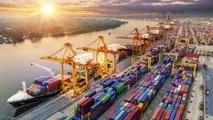World’s largest container ship completes first voyage from Asia to Europe
MSC Mediterranean Shipping Company announced that MSC Gülsün, the world’s largest container ship, has arrived in Europe after completing its landmark maiden voyage from the north of China.

MSC Mediterranean Shipping Company announced that MSC Gülsün, the world’s largest container ship, has arrived in Europe after completing its landmark maiden voyage from the north of China.
MSC Gülsün is the first of a new class of 23,000+ TEU* vessels to be added in 2019-2020 to the global shipping network of MSC, a world leader in transportation and logistics.
Built at the Samsung Heavy Industries (SHI) Geoje shipyard in South Korea, MSC Gülsün sets a new standard in container shipping, in particular in terms of environmental performance.
At some 400 metres long and more than 60 metres wide, MSC Gülsün has a record-size capacity for a container ship: 23,756 TEU. Bigger ships generally emit less CO2 per container carried, helping companies which move goods on MSC’s services between Asia and Europe to lower the carbon footprint of their supply chains.
As a family-owned group with a strong maritime heritage, MSC is confirming its commitment to investing in the world’s largest and busiest trade lanes with the arrival of MSC Gülsün and the 10 other ships in the pipeline in this class.
The vessel is equipped with more than 2,000 refrigerated containers, boosting the trade of food, drink, pharmaceutical and other chilled and frozen items between Asia and Europe.
This new class has been designed with a wide range of environmental, efficiency, stability and safety matters in mind.
MSC Gülsün features a remarkable approach to energy efficiency with the shape of the bow designed to enhance energy efficiency by reducing hull resistance. State-of-the-art engineering minimises wind resistance, resulting in lower fuel consumption.
Ocean container shipping is already one of the most environmentally friendly forms of cargo transportation, producing lower CO2 emissions per unit carried than other forms of freight transportation such as planes, trains, trucks or barges.
MSC Gülsün’s improved energy efficiency and fuel economy ensure that MSC is on track to meet international 2030 environmental policy targets set by the UN International Maritime Organization (IMO) ahead of time, building on a 13 percent improvement in CO2 emissions per ton of cargo moved already achieved across the MSC fleet between 2015 and 2018.
To comply with an upcoming marine fuel regulation in 2020, the ship is also equipped with a UN IMO-approved hybrid Exhaust Gas Cleaning System and has the option of switching to low-Sulphur fuel, or to be adapted for liquefied natural gas (LNG) in the future.
Safety first
Ensuring crew and cargo safety is MSC’s No. 1 priority. This new class of ships are equipped with double hull protection around the engine, as well as a 3D hull condition assessment program. A new dual-tower fire-fighting system with high-capacity pumps has been installed to further enhance the safety of seafarers onboard and protect cargo carried across the whole deck of the ship.
MSC Gülsün together with her 10 sister ships are also all designed to meet the next steps in digital shipping. Enabling fast data transmission to shore and connection for smart containers help make the shipping experience more transparent, safe and reliable for our customers.
SHI will deliver six of the new class of ships, while Daewoo Shipbuilding & Marine Engineering (DSME) is constructing the other five, also in South Korea.
*TEU = twenty-foot equivalent unit, the size of a regular container
Source: MSC



